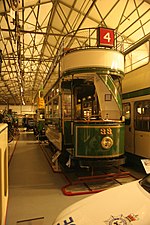The River Gipping is the source river for the River Orwell in the county of Suffolk in East Anglia, England, which is named from the village of Gipping, and which gave its name to the former Gipping Rural District. The name is unrelated to the name of Ipswich. although the County Town takes its name from Gippeswic. It rises near Mendlesham Green and flows in a south-westerly direction to reach Stowmarket. From there it flows towards the south or south east, passing through Needham Market and a number of villages to reach Ipswich, where it becomes the Orwell at Stoke Bridge. The river has supplied power to a number of watermills, several of which are still standing. None are operational, although the mill at Baylham retains most of its machinery, and is the only complete mill on the river.
There is evidence that the river was used for navigation in the thirteenth and seventeenth centuries, but in 1790 the Ipswich and Stowmarket Navigation Act 1790 was obtained to enable the river to be improved from Ipswich to Stowmarket. This was achieved by building 15 locks, and the river was then known as the Stowmarket Navigation. The navigation was opened in 1793, and although few records were kept of income and expenditure, the enterprise appears to have been profitable. In 1819, there was talk of expansion, but nothing came of the plans. In the 1840s, as railways arrived in the area, the Trustees negotiated with the Eastern Union Railway, and the navigation was leased to them for 42 years. At the end of the lease, it was in a poor state, despite the fact that the railway had a legal duty to maintain it.
Traffic to Stowmarket never recovered, but there was some traffic through the lower four locks, with barges serving the Fison's and Packard's fertiliser factories at Bramford. By 1917, it was no longer economical to keep it open, and it closed in 1922, although a formal closing order was not obtained until the early 1930s. After a period of decay, the local branch of the Inland Waterways Association raised the idea of restoring it. The River Gipping Trust now spearhead this work, and several of the lock chambers have been restored, while the Gipping Valley River Path had been established along the towpath. There are many listed buildings along the course of the river, including some of the locks and bridges (Creeting lock and bridge and Baylham lock and bridge) several of the mill buildings and Fison's fertiliser warehouse at Bramford, which has been severely damaged by a fire leaving just a skeleton.










